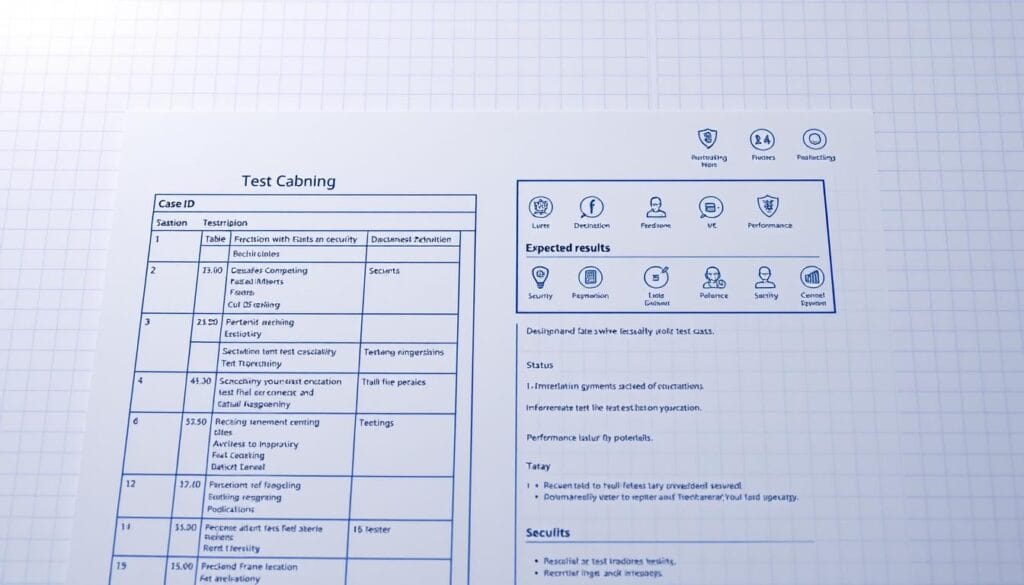Modern vehicles rely on intricate software networks to power everything from braking to infotainment. With nearly 90 million lines of code in today’s cars, even minor errors can lead to critical failures. Research shows software issues contribute to 70% of accidents, highlighting the urgent need for precision in development processes.
Specialized validation methods are essential for systems that demand real-time responsiveness. Unlike standard software, these frameworks interact directly with hardware, requiring unique protocols to address safety and performance. For example, advanced analysis tools can reduce error rates by over 30%, directly impacting operational reliability.
The stakes extend beyond safety. Software failures can result in liability costs exceeding $2.5 billion, making thorough verification a financial imperative. Manufacturers must balance speed with meticulous quality checks to meet global standards and consumer expectations.
Contents
ToggleKey Takeaways
- Modern vehicles contain up to 90 million lines of code, increasing complexity
- Software flaws contribute to 70% of automotive-related accidents
- Real-time performance demands unique validation approaches
- Advanced tools improve code quality by 30% or more
- Inadequate testing risks liability costs over $2.5 billion
Introduction to Automotive Embedded Testing
Modern transportation systems combine thousands of interconnected components that must work flawlessly under extreme conditions. With 70% of system defects stemming from integration errors, validation processes form the backbone of reliable vehicle operations. This discipline focuses on verifying interactions between hardware and software long before production begins.
Why Validation Matters
Component mismatches often remain undetected until late stages, creating costly rework. Teams using ISO 26262-compliant methods reduce safety recalls by 30%, directly protecting brand reputation. These protocols address three critical areas:
- Real-time communication between sensors and control units
- Consistent performance across temperature extremes
- Compatibility with evolving regulatory standards
Core Objectives for Success
Effective strategies prioritize preemptive error detection through simulated environments. By validating safety-critical functions like collision avoidance early, developers cut post-deployment failures by 40%. Another key focus involves maintaining sub-millisecond response times for systems controlling braking or steering.
Manufacturers balancing speed with precision achieve 25% faster time-to-market than competitors relying on traditional methods. This approach becomes vital as autonomous technologies demand unprecedented coordination between software layers and physical components.
Understanding Automotive Software Testing Fundamentals
The intricate networks powering today’s vehicles demand rigorous validation processes to prevent catastrophic outcomes. With codebases exceeding 100 million lines, manual verification becomes impractical. This complexity requires specialized frameworks that simulate real-world scenarios while addressing strict safety protocols.
Defining Embedded Systems in Modern Vehicles
Integrated components manage critical functions like engine control and collision detection. These systems process data in milliseconds, reacting to sensor inputs faster than human perception allows. Unlike standard applications, they operate under extreme conditions – from freezing winters to scorching summers.
Real-time responsiveness defines their architecture. A delay of 0.1 seconds in braking algorithms could mean life or death. Developers use automated tools to validate interactions between hardware and code, ensuring seamless performance across 15,000+ interconnected parts.
The Role of Software Testing in Safety and Compliance
Global standards like ISO 26262 mandate specific safety integrity levels (ASIL) for hazard mitigation. Systems controlling steering or airbags often require ASIL D certification – the highest risk category. Rigorous protocols reduce software-related accident risks by 65%, according to industry studies.
Compliance isn’t optional. Regulators audit validation records to confirm adherence to functional safety requirements. Teams that implement continuous evaluation frameworks achieve 40% faster certification than those relying on fragmented methods.
Deep Dive into automotive embedded testing Strategies
Advanced validation frameworks form the backbone of reliable software in mission-critical applications. By combining static code reviews with real-time simulation, teams uncover issues that traditional methods miss. Static analysis tools like PC-lint and Coverity slash defect density by 50% while enforcing MISRA C standards – a cornerstone for safety-critical codebases.
Static Analysis and Dynamic Evaluation
Static evaluation acts as a code “X-ray,” spotting vulnerabilities before execution. It flags memory leaks or logic flaws during development phases. Dynamic methods then test runtime behavior under simulated stressors like sudden sensor failures or data overloads.
“Combining these approaches catches 78% more defects than standalone methods,” notes a 2023 embedded systems study.
Layered Testing Integration
A three-phase approach optimizes coverage:
- Unit checks validate individual components
- Integration trials assess module interactions
- HIL simulations test full-system responses
Organizations using Hardware-in-the-Loop (HIL) methods cut validation cycles by 30% while improving fault detection. This layered strategy ensures both precision and efficiency – critical factors when launching complex systems.
Leveraging Hardware-in-the-Loop (HIL) Testing
Validating complex systems requires bridging virtual models and physical components. Hardware-in-the-Loop (HIL) methods connect real control units with simulated inputs, creating hybrid environments that mirror actual operation. This approach accelerates defect detection while minimizing risks associated with physical prototypes.

Simulating Real-World Operating Conditions
HIL setups replicate scenarios too hazardous for live trials, like sensor malfunctions at highway speeds. By integrating actual hardware with digital twins, teams test responses to voltage spikes or extreme temperatures. Studies show these environments uncover 70% of integration flaws before field trials begin.
Why does this matter? Over two-thirds of failures occur under unpredictable conditions – sudden weather shifts or component degradation. Traditional methods often miss these edge cases. With HIL, developers programmatically induce stressors to validate safety protocols. For example, simulating brake sensor failures helps refine collision-avoidance algorithms.
“HIL reduces validation cycles by 30% while tripling fault detection rates,” states a 2024 IEEE report on system verification.
Key advantages include:
- Cost-effective replication of rare events
- Real-time performance metrics under load
- Compatibility with evolving regulatory standards
Organizations adopting these tools achieve faster time-to-market without compromising safety. As systems grow more interconnected, HIL becomes indispensable for ensuring seamless operation across all scenarios.
Optimizing Unit and Integration Testing
Complex software systems demand iterative validation approaches to maintain stability amid frequent updates. Unit verification targets individual code modules – the building blocks of larger applications. Developers often modify these elements during development cycles, requiring test suites to evolve alongside code changes.
Continuous Integration and Regression Testing
Automated pipelines execute unit checks whenever code updates occur. This approach identifies conflicts early, reducing debugging time by 40% compared to manual methods. Teams using CI/CD frameworks report 25% fewer integration issues due to consistent validation across branches.
Integration evaluation follows a tiered structure:
- Component-level: Validates interactions between 3-5 modules
- Subsystem: Tests functional groups like sensor networks
- Full-system: Assesses end-to-end performance under load
Studies reveal 68% of defects surface during integration phases, particularly in data exchange between components. Regression protocols automatically retest critical pathways after changes, preventing new updates from breaking existing functions. A 2024 Forrester analysis shows organizations combining these strategies achieve 50% faster release cycles without compromising quality.
“Automated regression suites catch 92% of integration flaws before deployment,” states a DevOps implementation report.
Addressing Performance and Real-Time Requirements
Meeting strict timing demands is non-negotiable for mission-critical applications where delays can have severe consequences. Systems controlling safety features must process inputs within milliseconds while maintaining accuracy under unpredictable scenarios. A single missed deadline could cascade into operational failures affecting thousands of components.
Evaluating System Responsiveness Under Stress
Effective validation simulates worst-case scenarios using three core methods:
- Stress evaluation: Overloads components with 150% of expected data inputs
- Timing analysis: Measures response consistency across temperature extremes
- Fault injection: Introduces simulated hardware failures during peak loads
Organizations using these techniques reduce post-launch defects by 42% compared to basic checks. Consider this: systems failing latency benchmarks see 38% higher customer attrition rates. Speed without reliability erodes trust in advanced technologies.
“Real-time validation isn’t about speed – it’s about predictable behavior under chaos,” emphasizes a 2024 MIT systems engineering report.
Advanced frameworks combine environmental simulations with hardware interactions. Teams test communication protocols between sensors and processors while varying voltage levels or network stability. This dual approach ensures components meet requirements even when external factors push them beyond spec limits.
Navigating Compliance and Safety Regulations
Global regulations form the backbone of trustworthy systems in high-stakes industries. Manufacturers must balance technical innovation with rigorous adherence to evolving frameworks. Three standards dominate this landscape: ISO 26262, Automotive SPICE, and ISO 21434.
Insights on ISO 26262 and Automotive SPICE
ISO 26262 categorizes safety requirements through ASIL levels (A to D). Systems managing steering or airbags typically require ASIL D – the strictest tier. Organizations following this standard reduce safety recalls by 30%, according to 2023 industry data.
Automotive SPICE evaluates development processes rather than final products. Teams certified in this framework complete projects 15% faster through standardized workflows. Key focus areas include:
| Standard | Focus Area | Key Benefit |
|---|---|---|
| ISO 26262 | Functional Safety | 30% fewer recalls |
| Automotive SPICE | Process Maturity | 15% faster delivery |
| ISO 21434 | Cybersecurity | 40% threat reduction |
Ensuring Cybersecurity and Functional Safety
ISO 21434 addresses vulnerabilities across connected components. Implementing its protocols during development phases cuts potential breaches by 40%. A 2024 study notes: “Security integration at design stage proves 3x more effective than post-deployment fixes.”
Best practices include threat analysis simulations and encrypted communication channels. Teams should map data flows between sensors, ECUs, and external networks. Regular audits ensure ongoing alignment with both safety and security requirements as technologies evolve.
Developing Effective Test Cases and Documentation
A single unclear requirement can derail months of development progress. Studies reveal organizations with poor documentation practices face 80% longer time-to-market, while teams using structured frameworks resolve defects 40% faster. Clear records act as living guides for onboarding, audits, and future updates.

Best Practices for Test Case Creation
High-impact validation starts with cases that mirror real-world scenarios. Follow these principles to avoid ambiguity:
- Clarity first: Define inputs, steps, and expected outcomes in plain language
- Scenario coverage: Include edge cases like sensor failures or data overloads
- Maintainability: Use modular designs for easy updates across versions
Standardized templates reduce inconsistencies by 55%, according to 2024 DevOps research. Involve stakeholders early – their feedback ensures alignment with safety protocols and user expectations. One automotive supplier cut rework costs by 32% after adopting collaborative review cycles.
“Documentation isn’t paperwork – it’s the blueprint for scalable quality,” notes a Gartner analysis on validation efficiency.
Traceability matrices linking requirements to test cases simplify compliance audits. Teams that automate version control report 28% fewer errors during regulatory reviews. Prioritize searchable formats and centralized storage to empower cross-functional collaboration.
Leveraging Test Automation for Enhanced Efficiency
Streamlining validation processes has become critical as software complexity grows exponentially. Automated frameworks now handle repetitive tasks, freeing teams to focus on high-impact scenarios. Organizations adopting these tools report 80% faster defect detection compared to manual methods.
Automated Regression and Performance Evaluation
Regression suites execute thousands of checks in minutes, identifying issues missed during initial development phases. Performance scripts simulate peak loads, ensuring systems maintain responsiveness under stress. One study shows automated strategies reduce validation cycles by 50-90% depending on application scope.
Integrating CI/CD Pipelines
Continuous integration platforms automatically trigger test suites with each code update. This alignment between development and validation cuts deployment delays by 50% while maintaining quality. Teams using these pipelines resolve integration conflicts 40% faster through real-time feedback loops.
“Automation transforms validation from a bottleneck to a catalyst,” observes a 2024 DevOps efficiency report.
Key benefits include:
- Reusable test assets across multiple projects
- Consistent execution eliminating human error
- Scalable solutions adapting to evolving requirements





